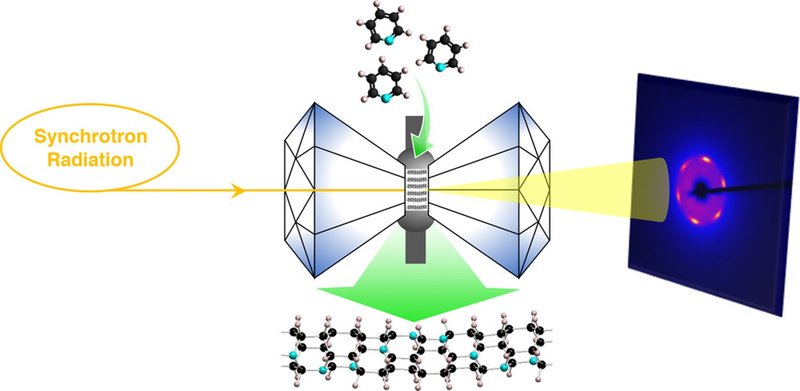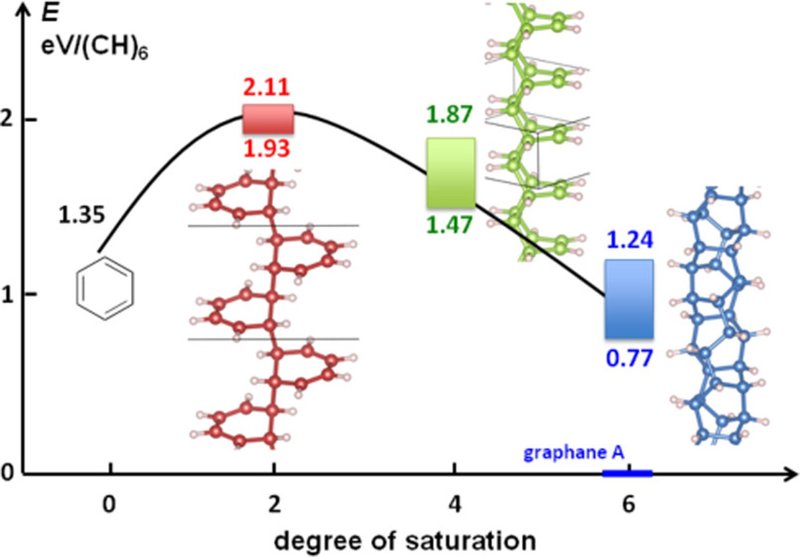While inorganic systems currently make up the majority of work in the broad field of quantum materials, organic materials are a promising source for both scientific investigation and next-generation technology, with the merits of abundant raw materials, greater chemical tunability, enhanced mechanical flexibility, and low processing cost. To accelerate the progress towards these ends, it is essential to bring new material candidates and investigate their properties in a cross-cutting manner across chemistry and physics.
We have pioneered an approach by applying non-topochemical solid-state reactions to produce new organic nanostructures with desired exotic physical properties. This newly developed method treats individual small molecules as a piece of ‘Lego brick’ and exploits uniaxial pressure to drive them polymerizing into crystalline nanostructures.

For example, carbon and carbon nitride nanothreads self-assemble into single crystals upon kinetically controlled compression of benzene and pyridine, respectively. These threads are sp3-bonded and one-dimensional and thus occupy a distinct position in a matrix of hybridization (sp2/sp3) and dimensionality (0D/1D/2D/3D) for carbon nanomaterials. Fully saturated “flexible diamond” nanothreads could exhibit a unique combination of unprecedented strength, flexibility, and resilience, while partially saturated threads with their stiff backbones may form a new class of organic conductors.


